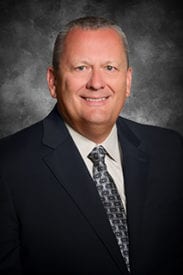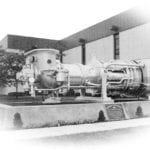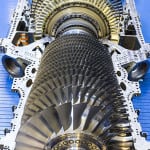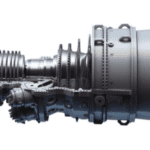John Lammas, GE Power’s chief technology officer and vice president of generation technology, an innovator who championed breakthroughs in gas turbine technology both for jet travel and power generation, died suddenly on April 12.
GE commemorated Lammas in an emotional tribute to his 35-year legacy at the technology conglomerate, noting his work could be seen at airports around the world, in desert oil fields, and the company’s new generation of high-efficiency gas turbines. “John’s impact on our company and the lives of so many was tremendous,” said Scott Strazik, CEO of GE Gas Power. “He was an incredible engineer, leader, mentor and friend.”

Lammas revealed his long-held passion and focus on gas turbine engineering in an an interview with POWER Senior Associate Editor Sonal Patel last July, as GE prepared to mark the 70th anniversary of its very first commercial power generating gas turbine—a 3.5-MW GE Frame 3 at Belle Isle Station in Oklahoma City. (To read the interview, see: “The POWER Interview: What Drove the Gas Turbine Technology Leap at GE Over the Past 70 Years.”)
Born in England, Lammas began working on gas turbine engines in 1978—“straight out of high school,” he recalled—as an apprentice with Rolls-Royce Aviation. “I was an undergraduate apprentice with them, got a degree [in mechanical engineering from the University of Salford in Manchester] in the UK, and then I joined GE aircraft engines in 1985—worked on many of the engines, including the GE90. I moved to what was GE Energy at the time in 2005 as the chief engineer for GE Energy. And basically, I’ve worked my whole career in gas turbines—aviation gas turbines, industrial gas turbines,” he said.
GE said Lammas spent more than two decades at GE Aviation, “where he built groundbreaking, colossal jet engines.” His work included designing the CFM56, the first engine developed by CFM International, a 50-50 joint venture between GE and Safran Aircraft Engines. He also spent a few years at GE Oil & Gas (which merged with Baker Hughes). As GE Gas Power’s chief technology officer, one clear object was to boost gas turbine efficiency through sophisticated technology, such as advanced manufacturing techniques, and stellar engineering practices. GE Power noted he was especially proud of the business group’s 605-MW 9HA installation at Bouchain, the French power plant that in 2016 became the first to be equipped with an HA-class gas turbine—and shattered a Guinness World Record for combined-cycle power plant efficiency.
During his interview with POWER last year, he marveled at how much gas turbine technology had progressed since 1939, the year that marked commercial operation of the world’s first industrial gas turbine. (For an interactive look at the history of GE’s gas turbine technology, see: “A Brief History of GE Gas Turbines.”)
“Obviously, my career extends back long enough that when I started working on a drawing board as a gas turbine designer—and that really wasn’t that long ago, it certainly wasn’t 1939—but if you look at the engineering side, we started 2D calculations, and if you go into the late 1970s and early 1980s, the use of finite element methods started to be developed. Certainly, structurally, they were applied first,” he said. “We went from 2D to 3D analytical methods that allowed us to design the development of computational fluid dynamics [CFD] and the application of that initially to aerodynamics and now to combustion. The ability to go from unsteady calculations in CFD in combustion, the ability to model the machine and enhance making it has just come leaps and bounds.”
He also pointed to the industry’s long list of formidable engineers who have made a solid impact on its legacy as a source of inspiration. During his interview, he credited Don Brandt, who was GE’s chief technology officer in the 1990s, for his pioneering work on the F-class machine. “He was the father of the F-class machine,” he said. “We brought him back, and we showed him the HA machine here in the factory. He’s looking at it—at a machine that has twice the output in megawatts of machines he was working on,” he said. “And when you think about it, from his machine to the one now, with 10% better in combined cycle efficiency. The machines he worked on were maybe 52% to 53%, and our latest machine that we’re starting to test today—which is the one he came to see—it will exceed 64% efficiency.”
The latest GE turbine model that Lammas worked on was the recently unveiled 7HA.03, a machine that reaps the benefits of the advanced manufacturing techniques he championed. He pushed for “new materials like 3D printing and ceramic matrix composites that he and his engineers planned on using to raise the turbine’s efficiency even higher,” GE said. “He said his team was running simulations on some of the world’s most powerful supercomputers to better harness the heat inside the turbine and reach temperatures as high as 2,800 degrees Fahrenheit, close to the melting point of steel.” Lammas said: “This will really allow us to take the next machine to the limits.”
While Lammas won’t be there to see the next record, his contributions to the industry will persevere, ingrained in the history of achievement and celebration that characterizes it.
—Sonal Patel is a POWER senior associate editor (@sonalcpatel, @POWERmagazine).









